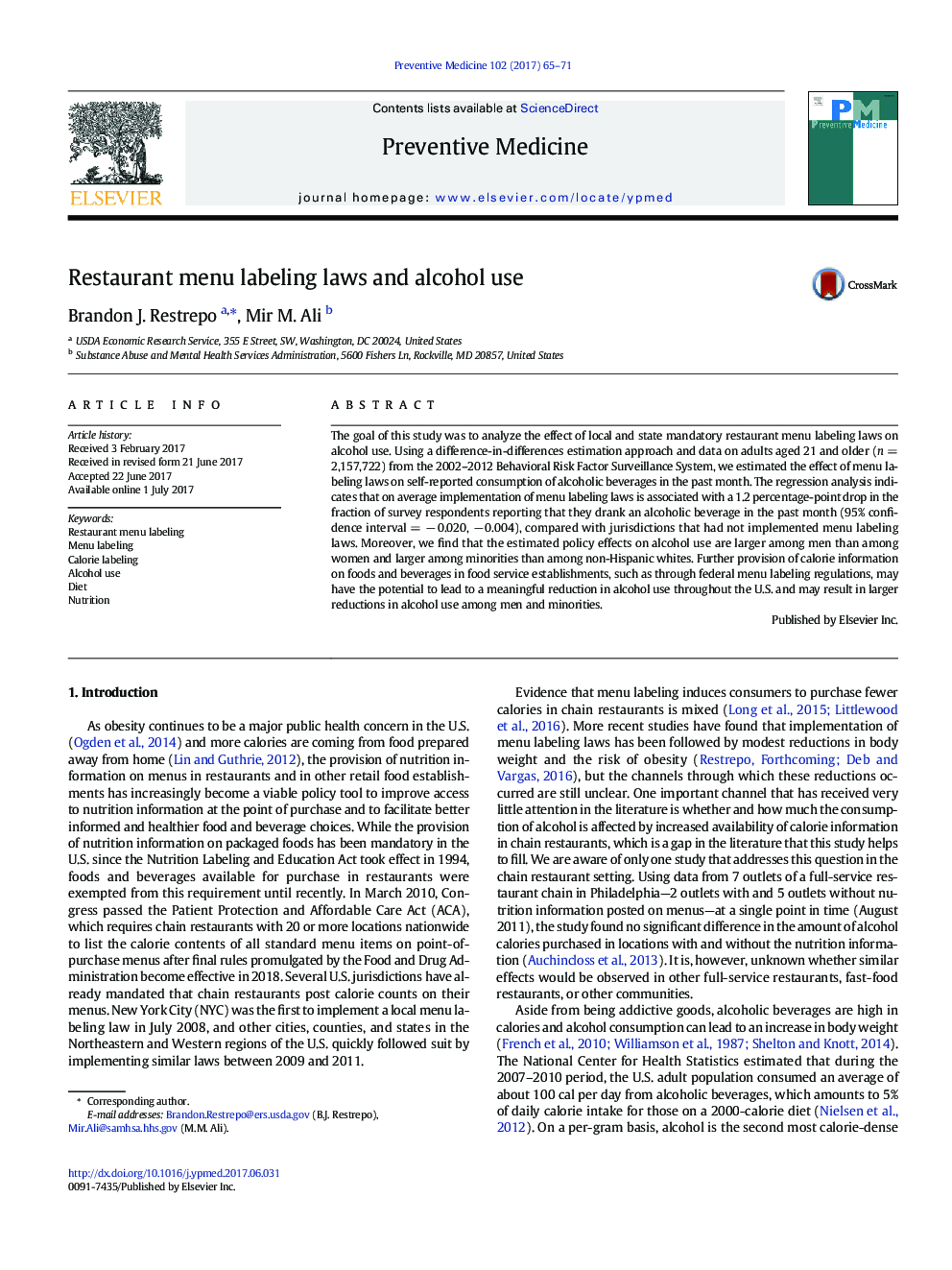| Article ID | Journal | Published Year | Pages | File Type |
|---|---|---|---|---|
| 5635570 | Preventive Medicine | 2017 | 7 Pages |
Abstract
The goal of this study was to analyze the effect of local and state mandatory restaurant menu labeling laws on alcohol use. Using a difference-in-differences estimation approach and data on adults aged 21 and older (n = 2,157,722) from the 2002-2012 Behavioral Risk Factor Surveillance System, we estimated the effect of menu labeling laws on self-reported consumption of alcoholic beverages in the past month. The regression analysis indicates that on average implementation of menu labeling laws is associated with a 1.2 percentage-point drop in the fraction of survey respondents reporting that they drank an alcoholic beverage in the past month (95% confidence interval = â 0.020, â 0.004), compared with jurisdictions that had not implemented menu labeling laws. Moreover, we find that the estimated policy effects on alcohol use are larger among men than among women and larger among minorities than among non-Hispanic whites. Further provision of calorie information on foods and beverages in food service establishments, such as through federal menu labeling regulations, may have the potential to lead to a meaningful reduction in alcohol use throughout the U.S. and may result in larger reductions in alcohol use among men and minorities.
Related Topics
Health Sciences
Medicine and Dentistry
Complementary and Alternative Medicine
Authors
Brandon J. Restrepo, Mir M. Ali,
